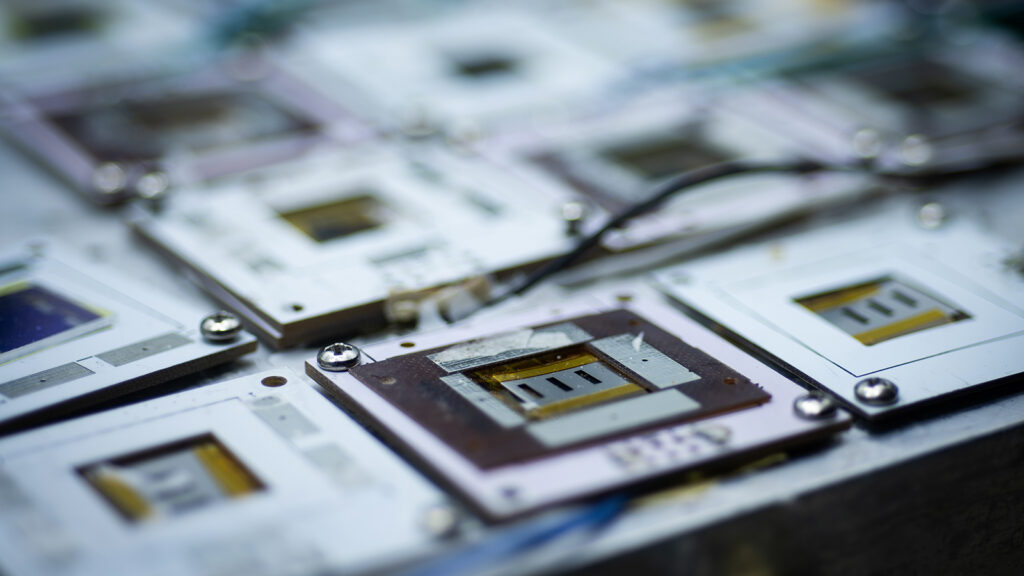From pv magazine USA
Researchers around the world have been “tuning out the defects” of perovskite solar cells, and are now much closer to manufacturing long lasting, cheap, high efficiency (more than 30%) modules.
When Covid-19 temporarily subsided in the fall of 2020, a group of Princeton researchers returned to campus to find that one of their experiments on perovskite solar cell layers had run for almost six months with nearly zero loss of efficiency. The scientists recognized that they had discovered a thin layer that gave their perovskite cells a much longer lifespan, and that they needed to greatly speed up their testing procedures.
In their paper, “Accelerated aging of all-inorganic, interface-stabilized perovskite solar cells,” the scientists describe a layer so thin that they call it “2D,” and sometimes describe it as having no thickness at all. The layer is placed on the perovskite solar cell, “capping” and protecting the photovoltaic material from breaking down.
The ultra-thin capping layer – Cs2PbI2Cl2 – fits between the charge carrying layer, made of cupric salt mixed with other materials, and the CsPbI3 based perovskite solar cells. The capping layer was estimated at 20 nanometers in thickness.
The scientists noted that in order to maximize the thermal and photostability of their cells, they chose a slightly less efficient, all inorganic perovskite solar cell material combination.
Popular content
The scientists showed the uncapped and capped solar cells as they are tested over periods up to 4,000 hours under different temperatures. The capped solar cell tested at 35 C showed zero efficiency losses after 3,551 hours.
Extrapolating these test results suggests that the perovskite layer, with its capping in place, would last for at least 30 years, retaining more than 80% of its original output under standard outside conditions.
The accelerated testing technique – seemingly very simple – was to blow hot air at increasing temperatures, which would generate additional wear and tear, simulating additional time going on. The perovskite solar cells were aged under continuous illumination from a Philips metal-halide lamp – specifically the Philips MSR 1200 HR.
After the testing, when placing the solar cells under microscopes, you can see the differences after 2,000 hours of testing between capped and uncapped units.
This content is protected by copyright and may not be reused. If you want to cooperate with us and would like to reuse some of our content, please contact: editors@pv-magazine.com.


3 comments
By submitting this form you agree to pv magazine using your data for the purposes of publishing your comment.
Your personal data will only be disclosed or otherwise transmitted to third parties for the purposes of spam filtering or if this is necessary for technical maintenance of the website. Any other transfer to third parties will not take place unless this is justified on the basis of applicable data protection regulations or if pv magazine is legally obliged to do so.
You may revoke this consent at any time with effect for the future, in which case your personal data will be deleted immediately. Otherwise, your data will be deleted if pv magazine has processed your request or the purpose of data storage is fulfilled.
Further information on data privacy can be found in our Data Protection Policy.